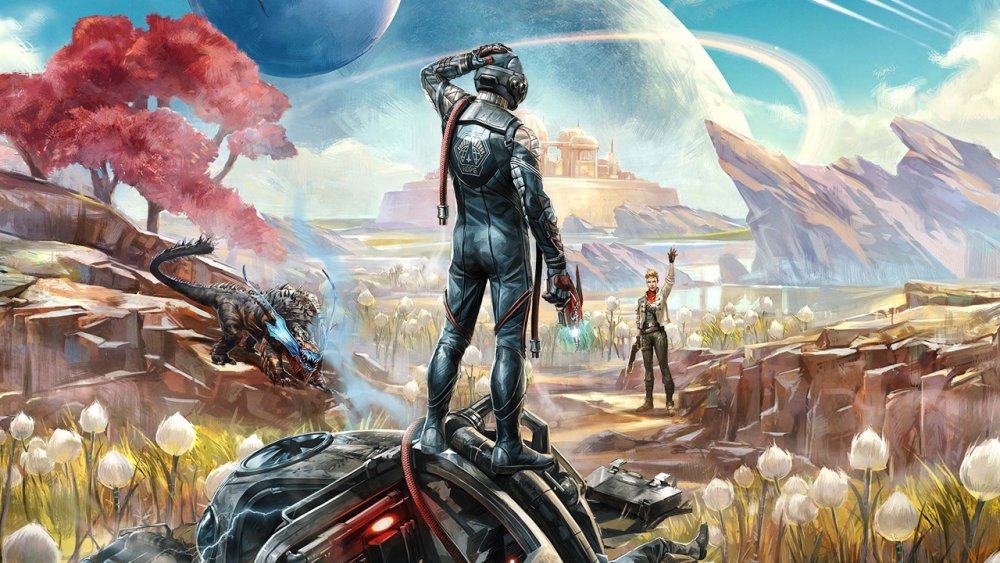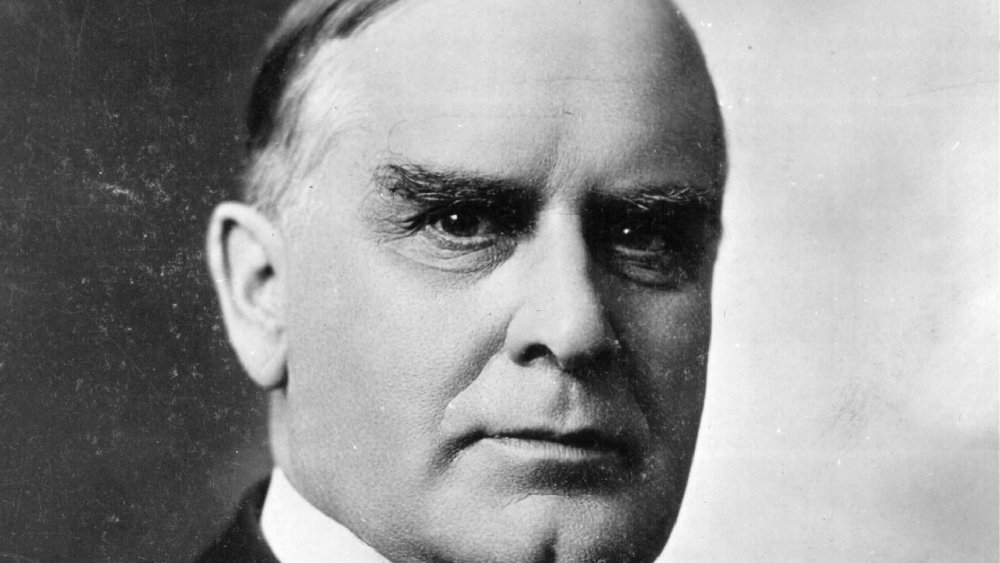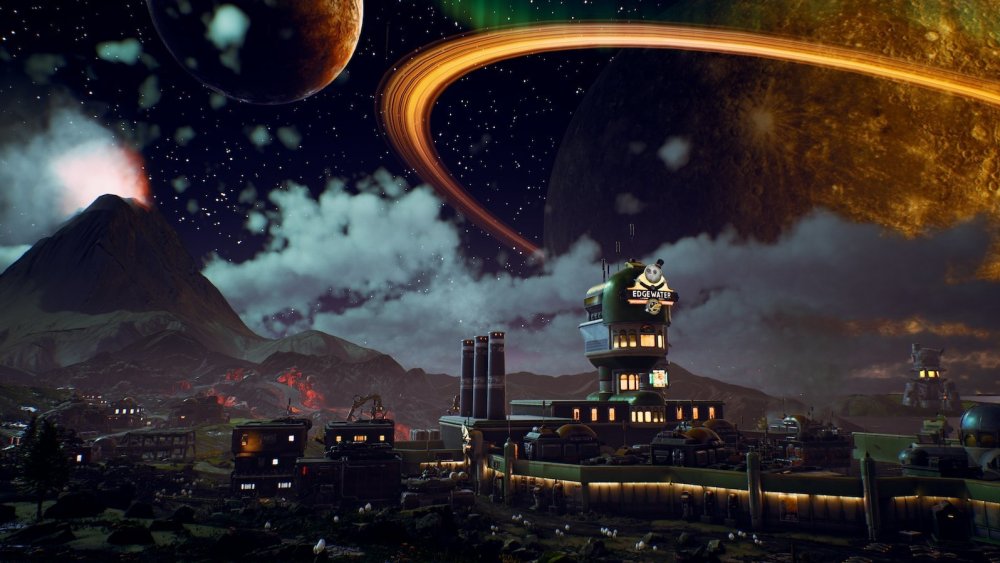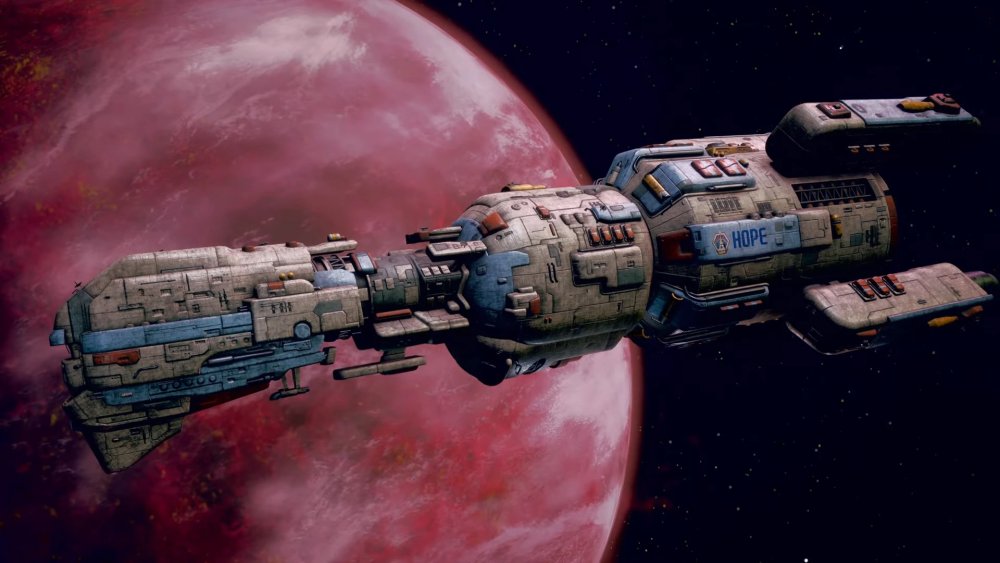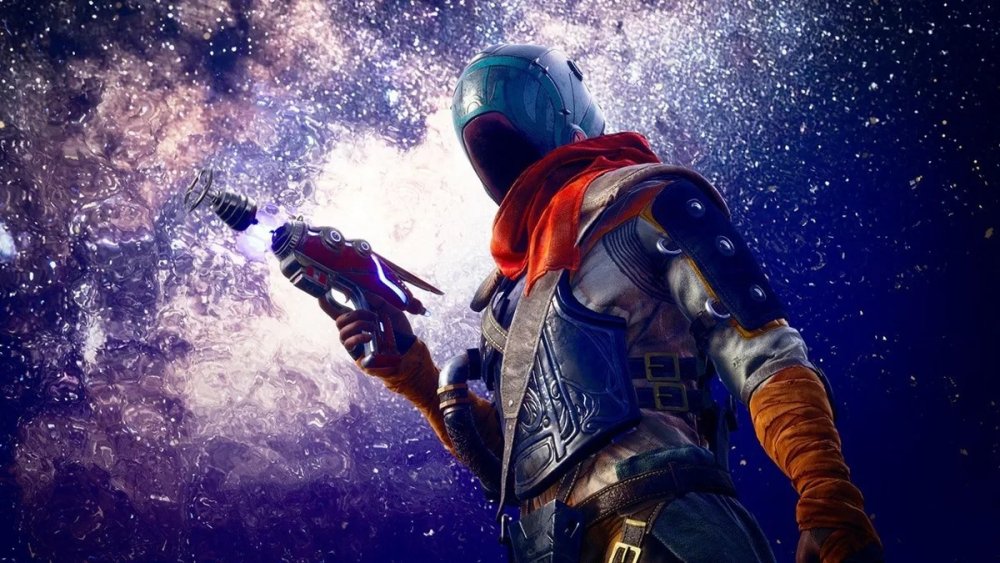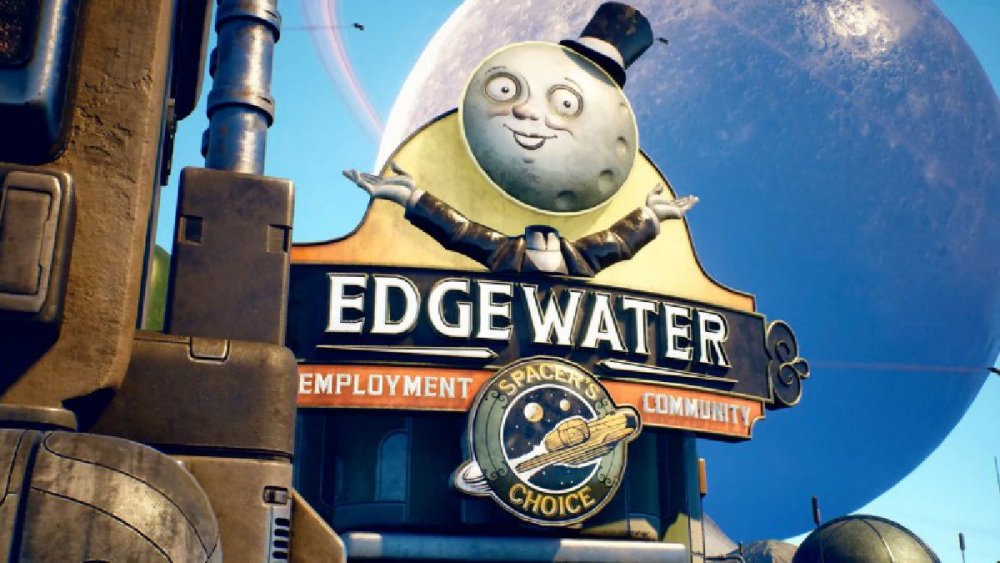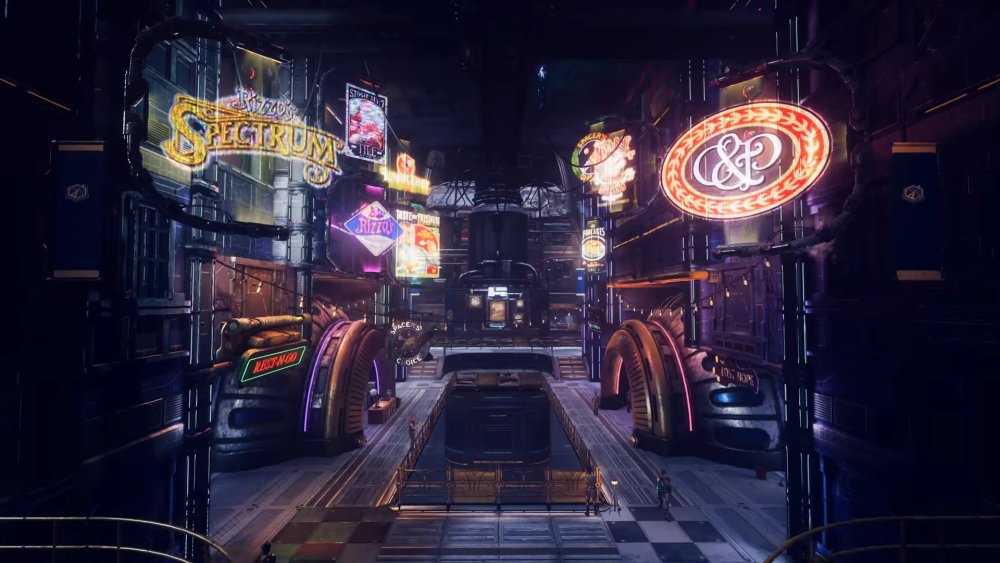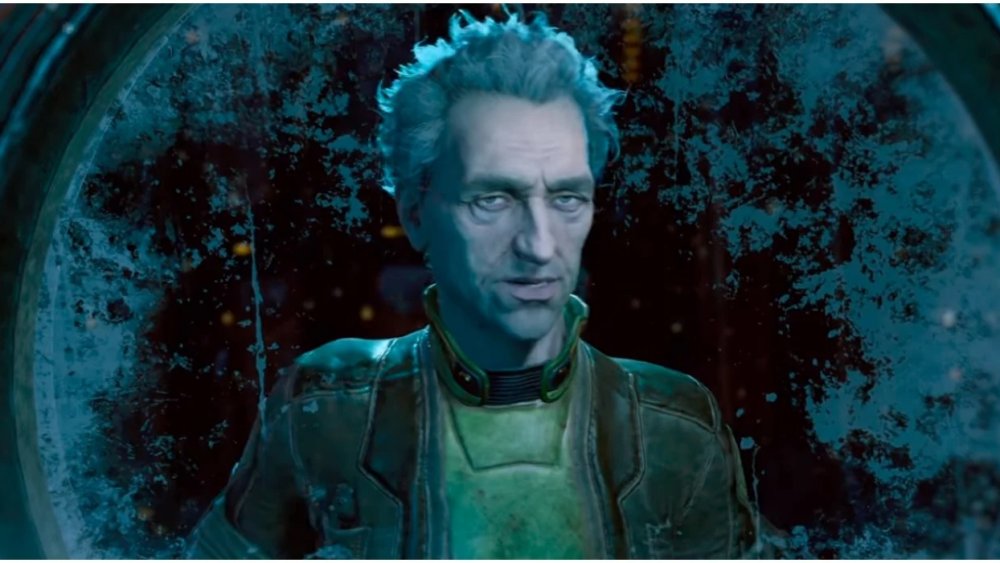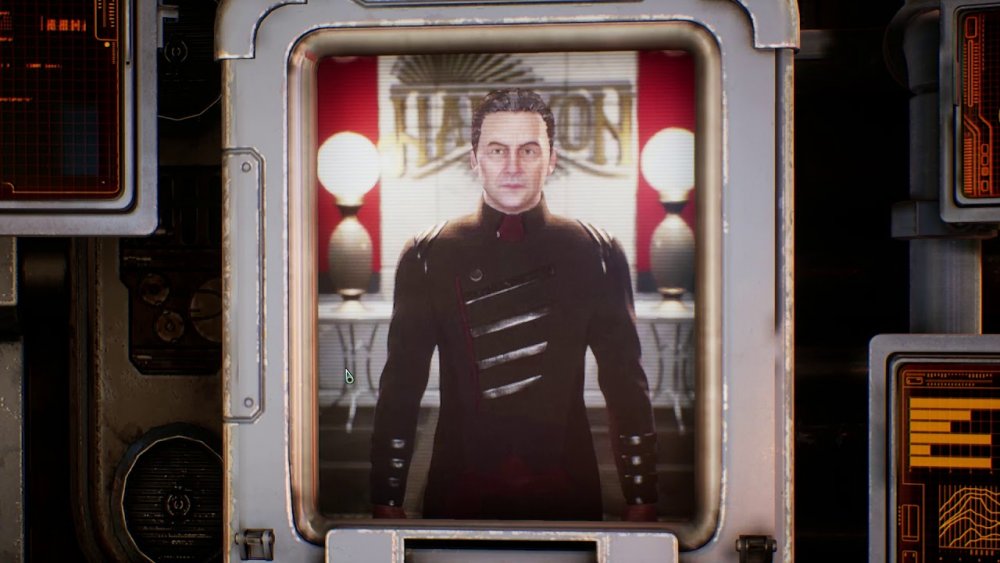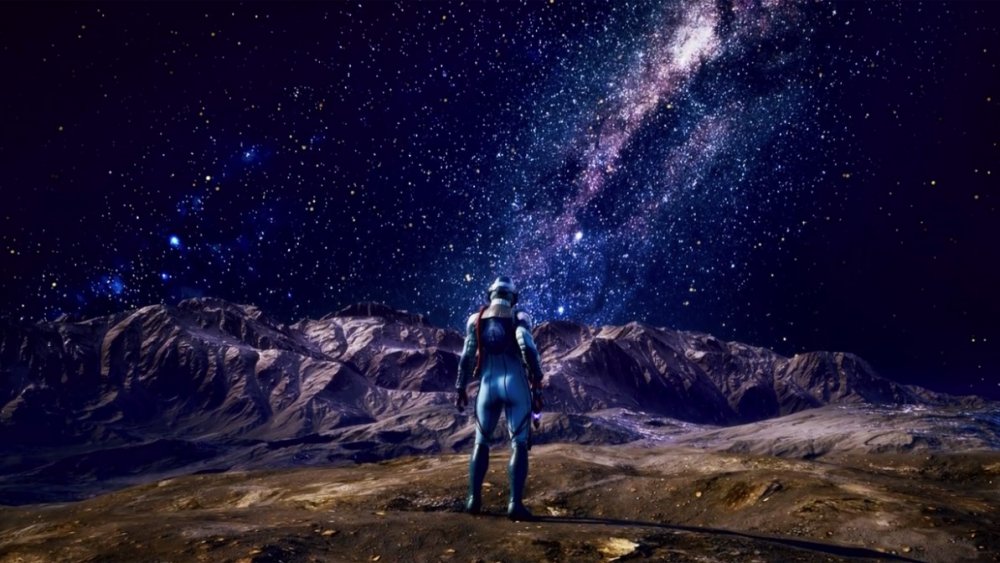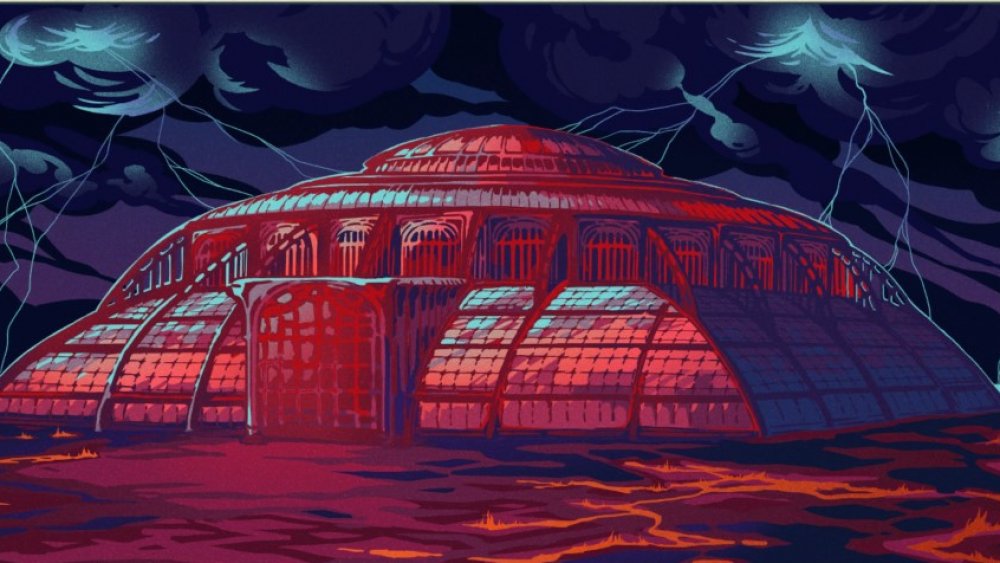The Entire Story Of The Outer Worlds Explained
Space. The final frontier. These are the voyages of the Unreliable. Its continuing mission: to explore strange new worlds, seek out new life and civilizations, and spend a not-insignificant amount of time shooting the living crap out of them.
That's The Outer Worlds, in a nutshell, at least in its wildest form. It could also be the story of a benevolent angel, going from settlement to settlement preaching freedom and serenity and the balance that exists among all living things, while also spending a not-insignificant amount of time shooting the living crap out of them.
But there's a bigger overarching story of unchecked greed, the acts of desperate people, and the very long arc of time bending towards justice. And now that the game is in our grubby little hands, we can tell that story in its entirety. And yes, that story involves shooting the living crap out of a lot of things.
Naturally, there are SPOILERS. Also, aside from the outcomes of a few of the major, ending-changing choices along the way, this will only be telling the most critical story beats pertaining to the Stranger. The Companion stuff, while excellent, is wholly optional. Nothing personal, Parvati, you know we love you.
The backstory to The Outer Worlds
It's worth noting that while the game presents a quick and dirty setup of who the corporations are and what kind of bastardry they're capable of, a recent Q&A with the developers fills in a pretty important piece of The Outer Worlds puzzle. Specifically, the fact that the game's story is actually an alternate history, stemming back to 1901.
So, at the turn of the 20th century, William McKinley was president of the United States. McKinley's presidency is pretty unremarkable for the most part, except for one big thing: an anarchist named Leon Czolgosz successfully assassinated him, which forced his vice president to get sworn in. His vice president, by the way, just happened to be Teddy Roosevelt, who soon after ushered in a period of trust-busting and breaking up mega-corporations.
So, naturally, in the universe of The Outer Worlds, McKinley is never assassinated. Because McKinley was never killed, corporations have no antitrust laws. And because there are no antitrust laws, corporate interests are allowed to expand to the point where they own, well, everything, including the government, which is now simply known as "The Board."
The new future
All that leads to a dazzling new future. Corporations are now the law of the land; one particular conglomerate made up of ten companies manages to rule under the umbrella name of the Halcyon Holdings Corporation. The good news is we've managed to make it into the stars and start colonizing space, thanks to the advent of a thing called a skip drive, allowing for faster-than-light space travel by folding space. If you've seen Event Horizon or Interstellar, you get the general idea. That's perfect timing, because the bad news is that humanity has totally screwed up the Earth.
An apocalyptic war completely ravages the planet, rendering it nigh-unlivable. The decision is made at the corporate level that the best way to handle this isn't to fix the Earth, but simply shuttle a few hundred thousand survivors to the off-world colonies. One of those colonies just happens to be, conveniently, the Halcyon system, which is where the story of The Outer Worlds truly begins. A ship called the Hope takes off for Halcyon with all of its potential colonists kept in cryogenic sleep until they've completed their skip jump.
The Hope and the Stranger
Unfortunately, the Hope's skip drive malfunctions light-years away from Halcyon. With no other way to cover the distance, the Hope is forced to limp onward with sublight engines, drifting on for decades. When the Hope finally arrives, there's another problem: thanks to the abnormally long cryosleep, when it's time to revive the colonists, each of them experiences, and we quote, "explosive cell death." Seeing no profit in revival, HHC brings the ship into a stationary orbit over the planet Typhon, and tells everybody else the ship was never found. Everyone seems to be pretty okay with that. Everybody, except Dr. Phineas Welles.
It's never quite clear what exactly caused noted scientist Phineas Welles to start questioning authority, but by the time The Outer Worlds starts, he's clearly been at it long enough to be declared public enemy #1 by the corporate powers that be. That status is pretty much etched in stone when he takes a trip to Typhon himself, boards the Hope, and after a few unfortunate failures, he manages to successfully revive a single colonist, known henceforth as the Stranger, the player-controlled protagonist.
The Outer Worlds proper begins
With the authorities on his heels, Welles doesn't have a whole lot of time to explain the particulars of this brave new world to the Stranger, except to throw them into an escape pod and tell them a friendly smuggler named Alex Hawthorne will be waiting on the nearby planet of Terra 2 with the next steps in his elaborate plan to find the specific chemicals he needs to safely raise the entire population of the Hope. That'll hopefully be a lot easier for the Stranger, since the Stranger doesn't have a bounty on their head high enough to pay off the entire galaxy's student loans.
It's apparently not that easy for Alex Hawthorne, however, since he's not even smart enough to step away from the landing beacon he sets up on Terra 2. He is consequently crushed when the pod touches down. After getting the lay of the hostile land, the Stranger makes their way to Hawthorne's ship, the Unreliable, and finagles their way on past the authorities trying to impound it. After making nice with the ship's sarcastic AI, ADA, the Stranger takes on Hawthorne's identity.
Edgewater
The problem is, the Unreliable needs a power generator before it has enough juice to take off, so the Stranger sets off a ways further up the road to the cannery town of Edgewater to see about obtaining one. Edgewater, however, has seen better days, with the saltuna canneries in complete disrepair, half of the worker population suffering from malnutrition since saltuna is all they can afford to eat, and the other half having left to form their own little settlement away from the corporate stooge running the place, Reed Tobson. For his part, Tobson lets you know where the new town's power plant is ... but only if the Stranger reroutes the power to Edgewater, away from the settlement, hopefully forcing them home.
That's a real dilemma, made all the worse after the Stranger heads to the settlement and finds out Edgewater's best botanist has made a tiny little slice of heaven of the place, complete with — gasp — fruits and vegetables. She also makes the counteroffer of maybe rerouting the power to the settlement away from Edgewater, which makes sense if not for the human lives still trying to scrape out a living there.
After traveling to the power plant and dealing with the place's robot problem with extreme prejudice, the Stranger can side with the settlement or Edgewater, but the Everybody Wins scenario involves sending the power to Edgewater after convincing Reed Tobson to leave.
The Groundbreaker and Stellar Bay
No matter how the Edgewater situation pans out, the Stranger is finally on their merry way. But they are detained briefly on the sovereign colony ship Groundbreaker by the sole corporate presence there. Fortunately, the Stranger manages to weasel their way out, hopefully while making a few friends among the Groundbreaker's crew. But, we'll get to that.
For now, after finally getting in touch with Phineas Welles, the Stranger has something resembling a plan: head to Stellar Bay on the planet Monarch in search of the necessary chemicals to revive the Hope. Stellar Bay, naturally, has problems of its own, with a waning corporation, Monarch Space Industries, vying for valuable advertising airspace with the Iconoclasts, a separatist group with a socialist bent, headed up by a pie-in-the-sky idealist named Graham, who hogs the airwaves trying to broadcast his new-agey truth. Both sides are pissing off Hiram Blythe, an information broker who hasn't been able to send or receive info since the two groups started fighting. The Stranger is once again the agent of change, choosing one side or the other. But preferably, they find out Graham was responsible for one of the biggest atrocities in Monarch history, creating an excuse to split from the Board.
After dealing with him, Graham's second-in-command, Zora, and the head of MSI, Sanjay, manage to come to an agreement on how to share the air.
The Stranger meets Phineas
After finally freeing up the information broker to provide, well, information, Hiram is able to broadcast some long overdue and crucial intel back to Phineas Welles. At that point, Phineas decides it's finally time to have a sit down with his rootin', shootin' partner in crime on his ship.
After meeting the man face-to-face — well, mostly, he's behind about a foot of bulletproof glass — he tells the Stranger that the chemicals have been located. The stuff's called dimethyl sulfoxide, and it's being hoarded in copious amounts at the corporate paradise that is Byzantium, on Terra 2, by Minister Aloysius Clarke. Byzantium just so happens to be the seat of Halcyon Holding Corporation's power in the galaxy, with no need for such a valuable chemical unless something abnormally huge is going on. So before the Stranger even embarks, something smells fishy, and for once in this whole wacky journey, it's not the saltuna.
Byzantium and the truth of The Outer Worlds
After landing in Byzantium and confronting Minister Clarke, it becomes clear that the good Minister has been placed under house arrest by his supervisor, the CEO of HHC: Charles Rockwell. This, too, isn't a normal situation. After talking, sneaking, or shooting their way into Rockwell's office and searching for clues, the Stranger finds a video file on their computer: unedited footage of a corporate propaganda piece about the current food shortages affecting the entirety of Halcyon. In it, the Chairman is attempting to sell the general populace on what's labeled a "Lifetime Employment Program," which is a nice way of saying they're planning to save food by jettisoning everybody off the Hope, using the sulfoxide to freeze their best employees for short periods, while the 1% continue to live like normal.
Obviously, this will not stand, so the Stranger promptly works their way into the Chairman's secret lab where the sulfoxide is being used for experiments to prevent cell death — experiments on the very scientists working on the problem, in fact, which is just horrifying — steals the chemicals, and gets ready for a war.
The major choice of The Outer Worlds
With the chemicals in hand, it's time to get started unthawing the colonists. After getting back onboard the Hope, the Stranger is contacted by HHC's adjutant, Sophia Akande, who offers a proposal to turn in Phineas, be rid of the burden of having to save the galaxy, and live the life of the debauched. If the Stranger decides to give in, they place a tracker on Phineas' ship that the HHC uses to send goons to rough him up and take him into custody. If they tell Akande to get lost, they manage to find Phineas anyway, but, hooray for not helping?
Either way, Phineas ends up on the prison planet of Tartarus, while the Stranger either prepares to capitalize on his capture or prepares to go in guns blazing, joined by whichever of Halcyon's many factions they've made nice with along the way. Needless to say, that second option's a lot cooler.
The endings of The Outer Worlds
If the Stranger turned Phineas in, Phineas will engineer a prison break — for every prisoner. But once the Stranger puts the rebellion down, Phineas' spirit finally breaks, paving the way for HHC to enact their Life plan, killing the Hope's colonists while the rich laugh their way to the bank. That's awful bleak, so let's go to the good ending.
The good ending involves the Stranger working their way through the prison, confronting a fully unrepentant Chairman Rockwell, and convincing him not to make his big speech, either by diplomacy or by making him a corpse. Akande doesn't go down so easy, though, offering her own counterpoint in the form of the prison's massive mech warden, R.A.M. Still, the mech's no match for the Stranger, and after the mech goes boom, Akande is dealt with in similar fashion. Phineas is rescued and the work finally begins to do right by the Hope. The best of the best are unthawed first, working to resolve the socioeconomic problems plaguing the system. It takes some years, and Phineas unfortunately doesn't live to see the fruits of his labors, but Halcyon does eventually become a much fairer place for the colonists ever after.
Of course, there is the question of why original Earth has gone dark, and why every attempt at communication fails. But that's a whole other story ...

